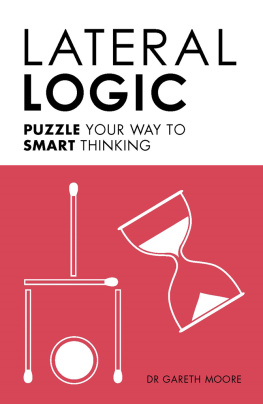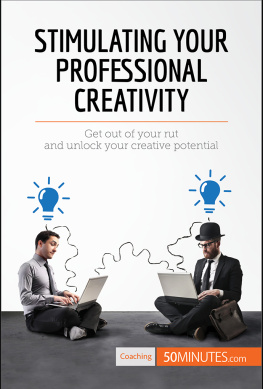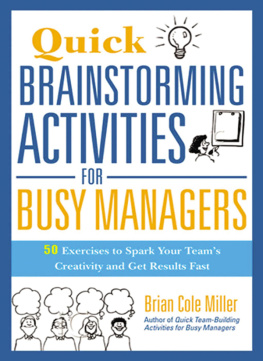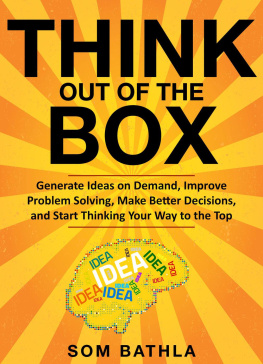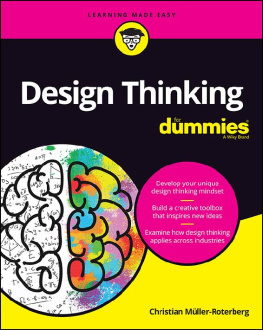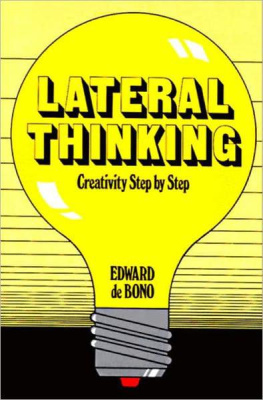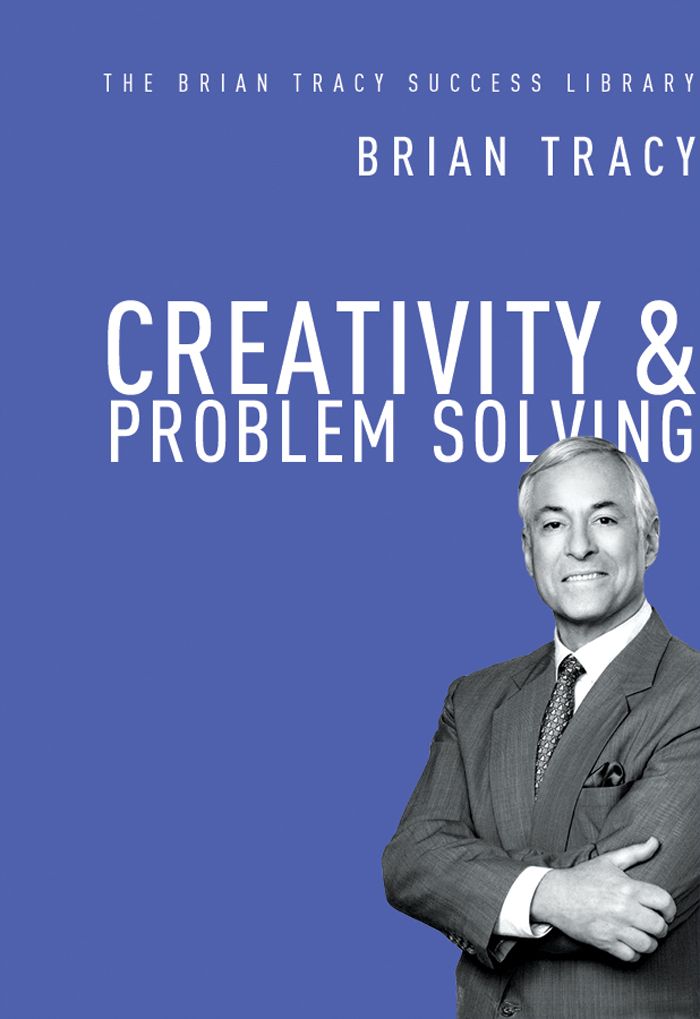CREATIVITY
AND PROBLEM
SOLVING
BRIAN TRACY

American Management Association / www.amanet.org
Bulk discounts available. For details visit:
www.amacombooks.org/go/specialsales
Or contact special sales:
Phone: 800-250-5308 / E-mail: specialsls@amanet.org
View all the AMACOM titles at: www.amacombooks.org
This publication is designed to provide accurate and authoritative information in regard to the subject matter covered. It is sold with the understanding that the publisher is not engaged in rendering legal, accounting, or other professional service. If legal advice or other expert assistance is required, the services of a competent professional person should be sought.
Library of Congress Cataloging-in-Publication Data
Tracy, Brian.
Creativity and problem solving / Brian Tracy.
pages cm
Includes index.
ISBN-13: 978-0-8144-3316-4
ISBN-10: 0-8144-3316-2
1. Creative ability in business. 2. Creative thinking. 3. Problem solving. I. Title.
HD53.T73 2015
658.4'03dc23
2014022537
2015 Brian Tracy
All rights reserved.
Printed in the United States of America.
This publication may not be reproduced, stored in a retrieval system, or transmitted in whole or in part, in any form or by any means, electronic, mechanical, photocopying, recording, or otherwise, without the prior written permission of AMACOM, a division of American Management Association, 1601 Broadway, NewYork, NY 10019.
About AMA
American Management Association (www.amanet.org) is a world leader in talent development, advancing the skills of individuals to drive business success. Our mission is to support the goals of individuals and organizations through a complete range of products and services, including classroom and virtual seminars, webcasts, webinars, podcasts, conferences, corporate and government solutions, business books, and research. AMAs approach to improving performance combines experiential learninglearning through doingwith opportunities for ongoing professional growth at every step of ones career journey.
Printing number
10 9 8 7 6 5 4 3 2 1
American Management Association / www.amanet.org
CONTENTS
Introduction
Creative thinking skills are vital to your success. The average manager spends 50 percent or more of his or her time solving problems, either alone or with others. Your ability to deal with difficulties and solve problems will, more than anything else, determine everything that happens to you in your career. In fact, it is safe to say that an individual with poor creative thinking skills will be relegated to working for those with better-developed creative thinking skills.
The good news is that creativity is a skill, like riding a bicycle or operating a computer, that can be learned and developed with practice. In addition, there seems to be a direct relationship between the quantity of new ideas that you generate in your work and the level of success that you achieve. One new idea or insight can be sufficient to change the direction of a career or an entire company. The profitability, income, and future prospects of you and your company can depend on your creative contribution.
Remember, everything that you are or ever will be will come as the result of the way you use your mind. If you improve the quality of your thinking, you will improve the quality of your life.
This book is designed to give you a series of proven, practical methods and techniques that you can use, starting immediately, to generate a stream of life- and work-enhancing ideas. Every method in this book, when practiced, will give you better results than you are getting today. Sometimes the results will amaze you.
Unfortunately, the great majority of people do little or no creative thinking at all. They are stuck in a comfort zone where they strive to remain consistent with what they have done and said in the past. This is why Emerson wrote, A foolish consistency is the hobgoblin of little minds.
They are missing one of the great opportunities for advancement and success that exists, and that is available to everyone.
Lets begin a whole new way of looking at the world.
ONE
The Root Sources of Creativity
Everyone is creative. Creativity is a natural, spontaneous characteristic of positive individuals with high self-esteem. Companies that create a positive working environment receive a steady flow of ideas from everyone on the staff.
What are the factors that largely determine your creativity? There are three. The first is your past experiences. What has happened to you in the past has a major effect on determining how creative you are in the present.
Influence of the Past
It seems that creative people, because of their backgrounds, consider themselves to be highly creative. Generating ideas is normal and natural for them.
Uncreative people, on the other hand, have often had negative environments, starting in childhood and continuing through different jobs, where they have generally accepted that they are not particularly creative at all. Even when they have good ideas, which they often do, they will reject or ignore the ideas, believing that if they are the source, the ideas cant be any good.
When you work (or have worked) for a company where your ideas are encouraged and stimulated, where your bosses and coworkers treat your ideas with respect and interest, you will feel yourself to be more creative in your job.
Power of the Present
The second factor that determines your creativity is your current situation. Is there a lot of encouragement for new ideas in your workplace? Do people laugh together and get involved in discussing ideas together, or are your ideas ridiculed and criticized?
In the 1990s, Eastman Kodak was a $60 billion company with 140,000 employees. It dominated the world of film, as it had for many decades. Then, after many years of work, the scientists and researchers at Eastman Kodak discovered a new process called digital photography that did not require the medium of film to take and print photographs. When they took this discovery to their senior managers, they were roundly criticized and told, This idea is no good; Kodak is a film company and this technology does not require film.
They were sent back to their offices and laboratories and told to forget about this new breakthrough technology. The rest is history. Within a few years, the Japanese camera manufacturers leaped all over the idea of digital photography, bringing out new digital cameras one after another, and soon, Kodak was finished.
The Person You See
The third factor that determines your creativity is your self-image. Do you consider yourself to be a creative person? Do you see yourself as being highly creative, or not? Many studies indicate that 95 percent of people demonstrate the potential to perform at high levels of creativity. The work done by Howard Gardner at Harvard University concluded that there are several different ways of thinking, and that each person is a potential genius in at least one area. What this means is that the key to unlocking your creativity is to begin to think of yourself as a highly creative person.
The Inner Game
Timothy Gallwey, in his book The Inner Game of Golf


